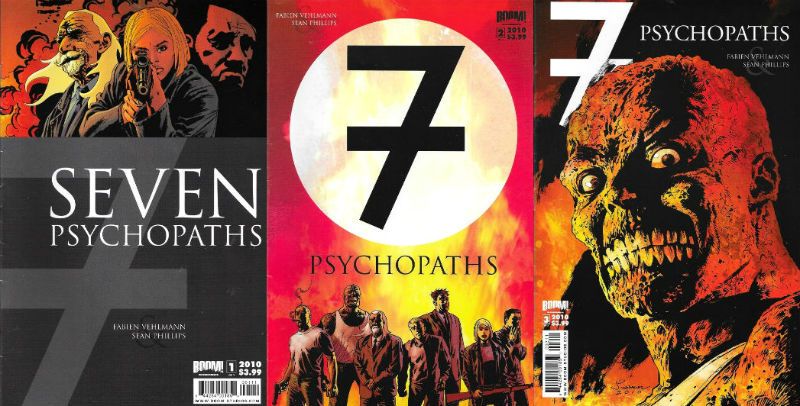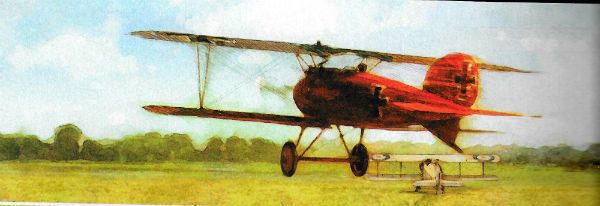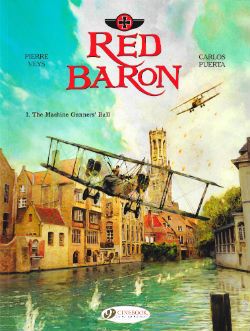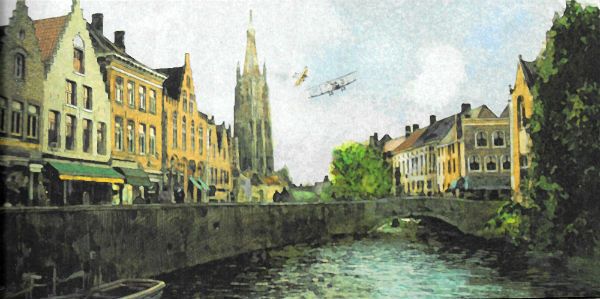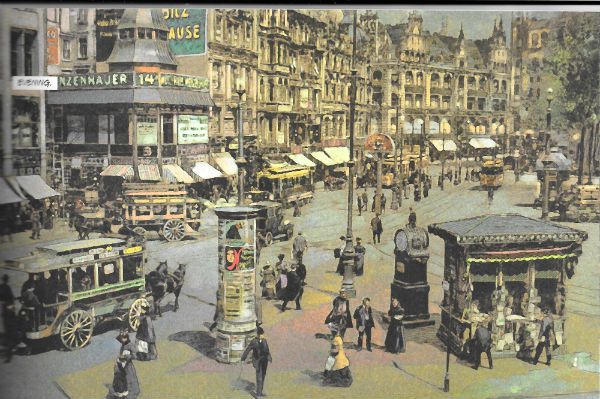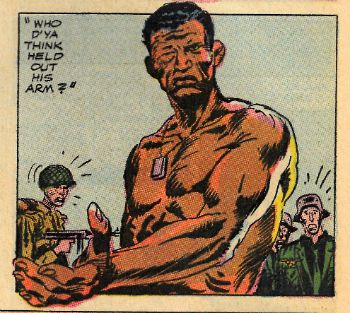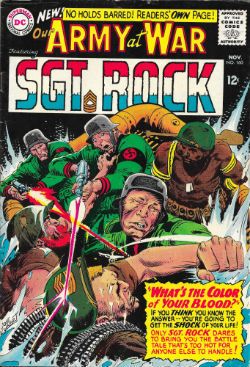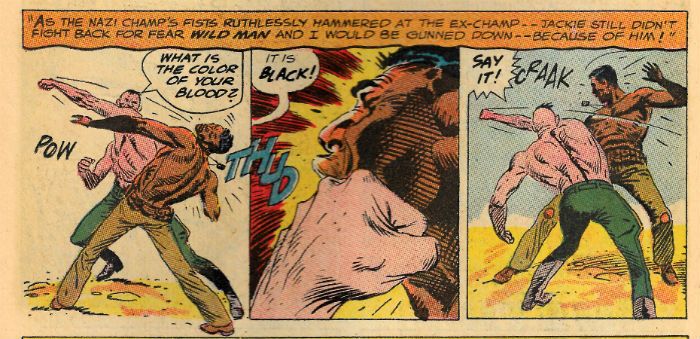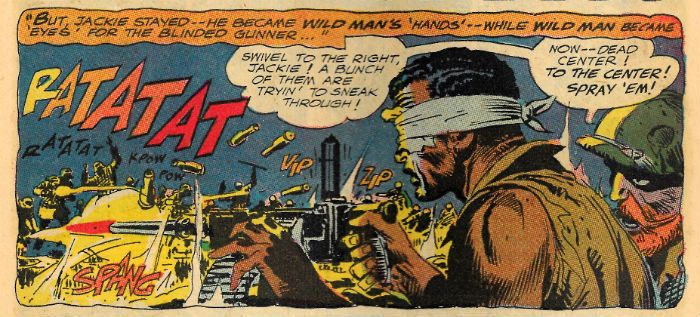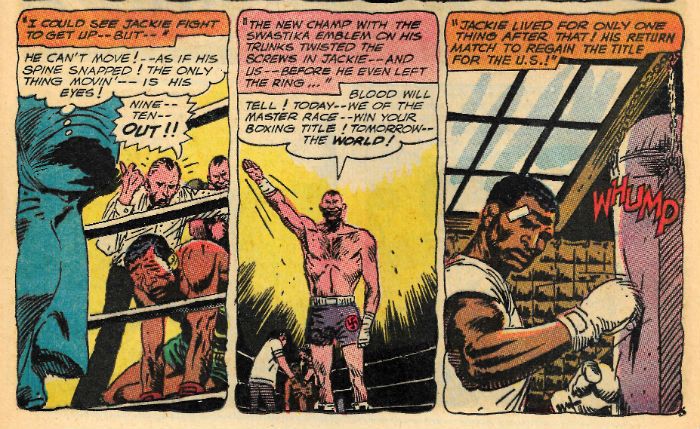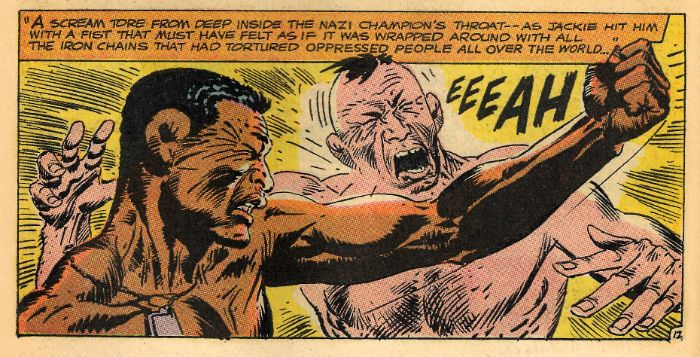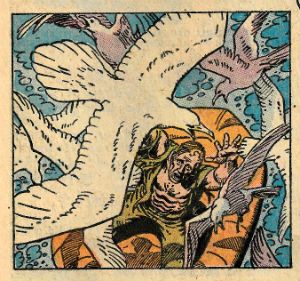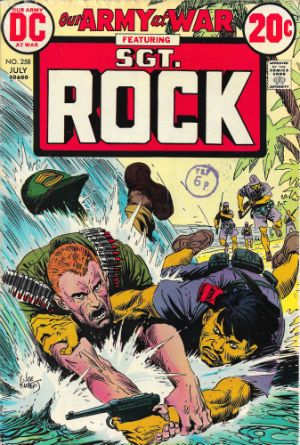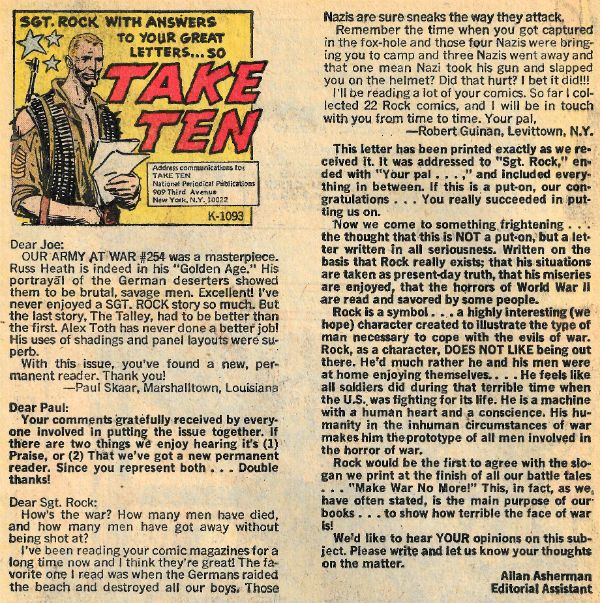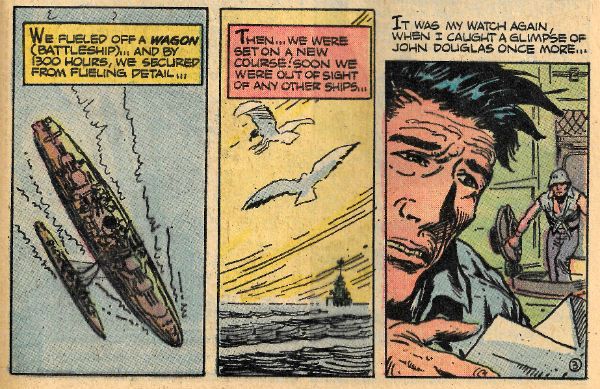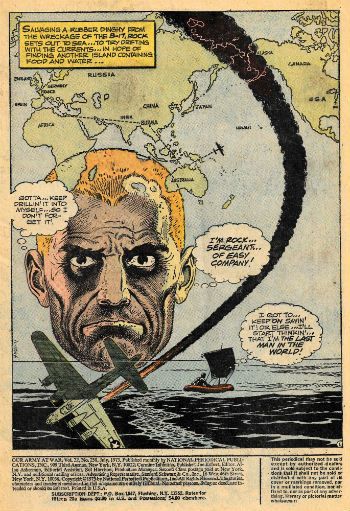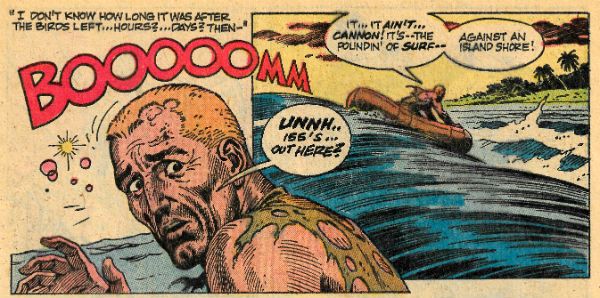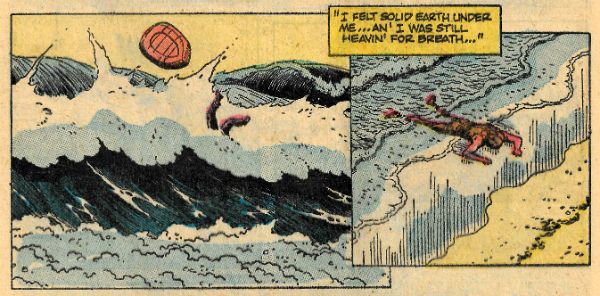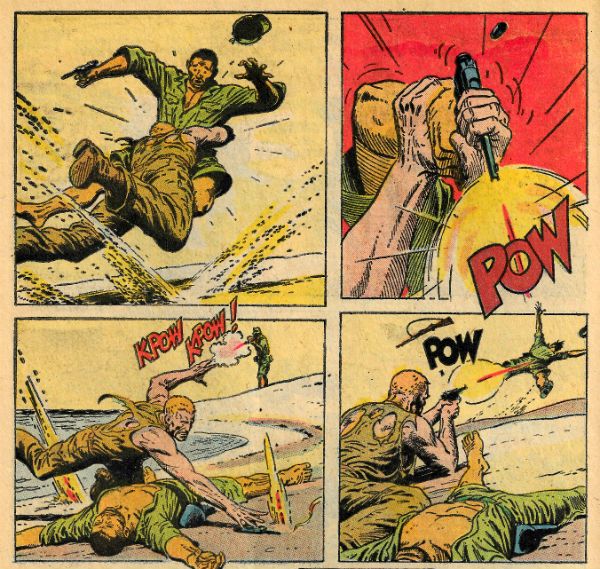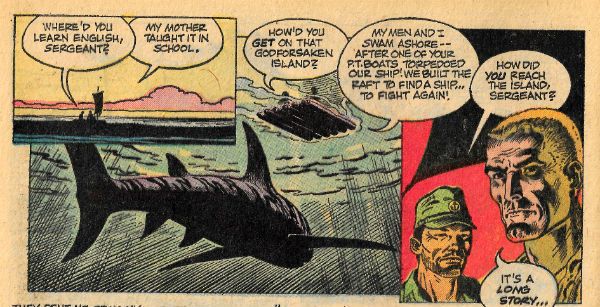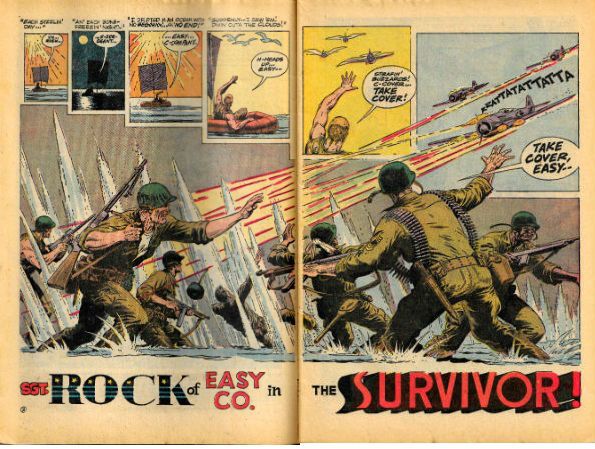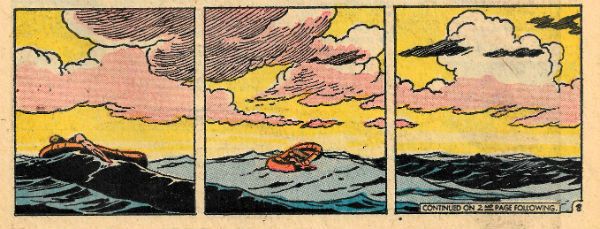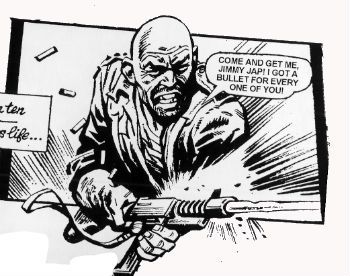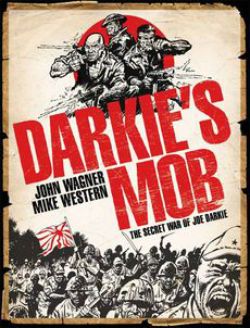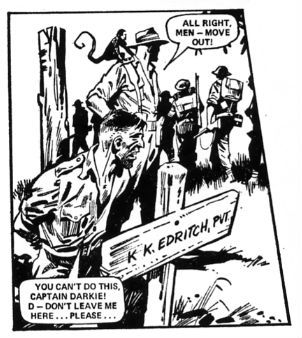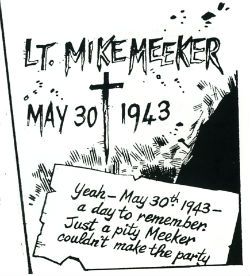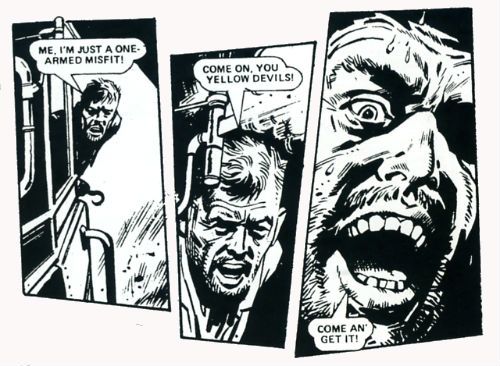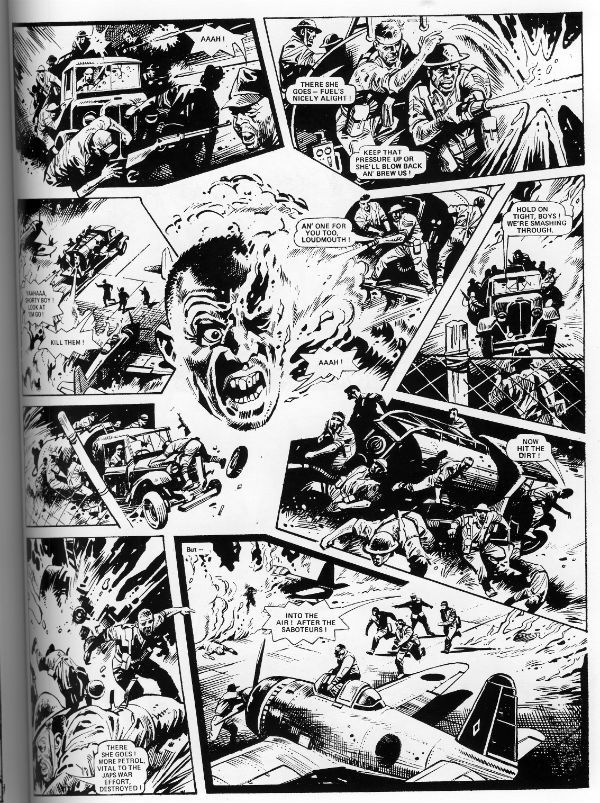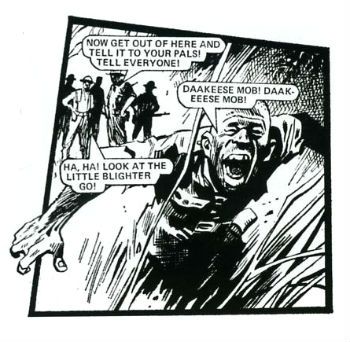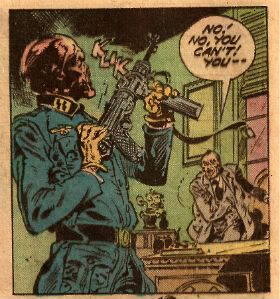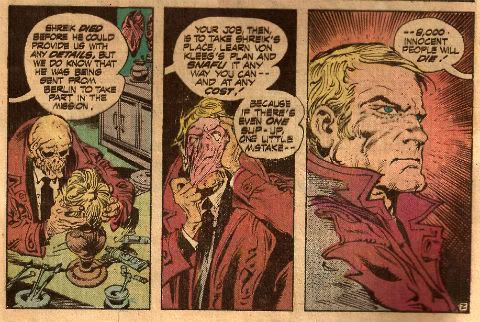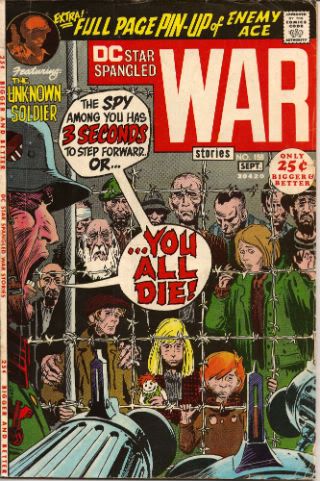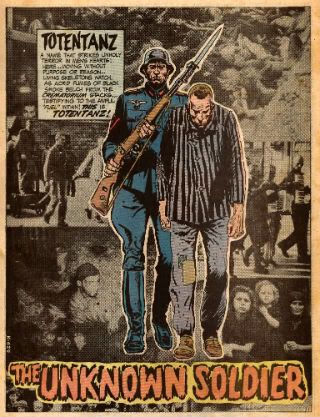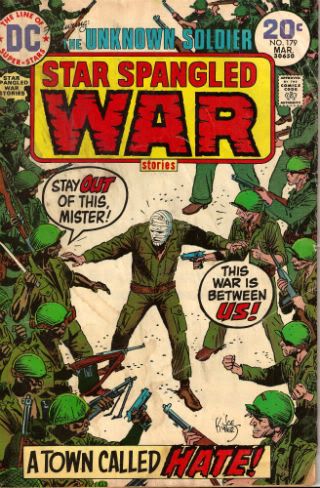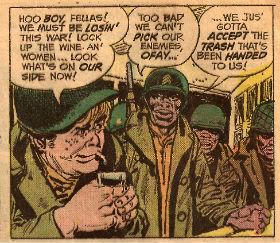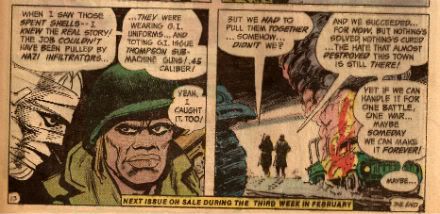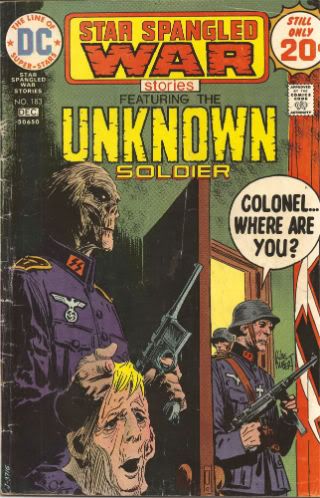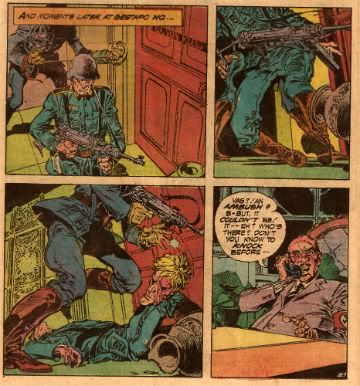“We Must Allow None of These DIBBUKS To Escape!” COMICS! Sometimes God Loves a Trier.
/A funny thing happened on the way to The Reichstag….
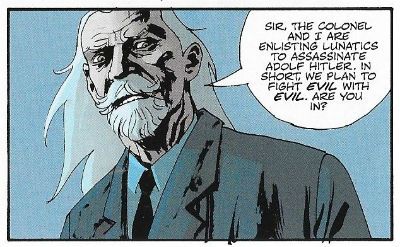 7 PSYCHOPATHS by Phillips, Vehlmann, Heching, Hubert & Peteri
7 PSYCHOPATHS by Phillips, Vehlmann, Heching, Hubert & Peteri
Anyway, this...
7 PSYCHOPATHS #1-3 Art by Sean Phillips Written by Fabien Vehlmann Translated by Dan Heching Coloured by Hubert Lettered by Troy Peteri BOOM! Studios, $3.99 each (2010)
Despite sharing a name this 3 issue comic book series published by BOOM! Studios in 2010 is nothing to do with Martin McDonagh’s 2012 ridiculously overstuffed (but still wildly enjoyable) movie. Also, despite it involving an attempt on Adolf Hitler’s life by a bunch of ne’er do wells any similarities with Quentin Tarantino’s “Inglourious Bastards” (2009) will have to come from you, because I don’t watch Quentin Tarantino movies anymore. I’d rather watch the movies he rips off, uh, repurposes. Hey, you watch what you want and I’ll watch what I want, nobody’s judging anyone here. Going on the brief text piece provide by Sean Phillips in the back of #3 this was initially published as a 1 volume hardback in that there Europe in 2007. Which explains why each issue feels weirdly paced, particularly the first one where they don’t even finish introducing the cast before you hit the back cover. Still, no one’s going to be reading it in monthly instalments in 2017 so it’s not really a concern. I’m sorry I brought it up. Alright, alright, don’t go on about it. ♫♬♩ Let it go, let it go, let it gooooooooooooooo! ♫♬♩.
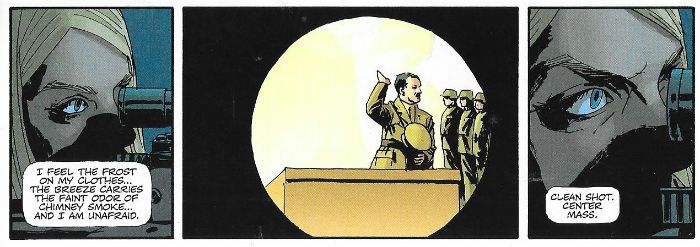 7 PSYCHOPATHS by Phillips, Vehlmann, Heching, Hubert & Peteri
7 PSYCHOPATHS by Phillips, Vehlmann, Heching, Hubert & Peteri
So the high concept is set a nutter to kill a nutter. Or 7 nutters, for as Joshua Goldschmidt, the plan’s instigator and principal nutter, points out, 7 in the Kabbalah (קַבָּלָה) symbolises completeness. I remember this from R.E. lessons myself; you know, all that business about 7 days to create the world, Exodus telling you how to make a 7 candle menorah, er, 7 brides for 7 brothers all that. 40 was a pretty popular number in the Bible or Torah (תּוֹרָה) (from which the Kabbalah is derived) as well, maybe Joshua Goldschmidt would have been better with 40 psychopaths. He would certainly have been better with 40 days, because he also specifies the mission has to take 7 days. It’s a bit of a tight deadline that but, hey, he’s not the full shilling is he? He’s all about the number 7 this guy. But why people with, uh, issues. Look, okay, I apologise for using the term “nutters” back there, I did so on the understanding that we’re all here to have a bit of light hearted fun, and that when I use the term I’m kind of just indicating how exaggerated and cartoonish the mental health issues on show are. Life is hard and we’re all built differently, and it takes its toll on us all in different ways. You know, my compos isn’t exactly totally mentis either but, yeah, I hear you, words matter. Duly noted. Even Goldschmidt pitches a fit when he catches his Special Executive Operations (SEO) liaison calling the project “7 Psychopaths”, even though there are 7 of them and they are all…
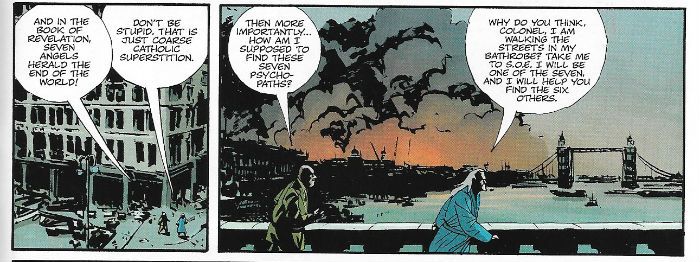 7 PSYCHOPATHS by Phillips, Vehlmann, Heching, Hubert & Peteri
7 PSYCHOPATHS by Phillips, Vehlmann, Heching, Hubert & Peteri
…talented in their own ways. Willy Wright just wants to be loved and to this end can transform himself into anyone you like with a bit of bootblack and a comb, like that “Ooo will buy mah steecks!” guy off the Fast Show or (my Bronze Age DC fave) The Unknown Soldier, but without the hideous facial scarring. I guess that’s because there was no scarring left to go round because "The Warlord" is a hulking crust of scar tissues with tendencies of a decidedly pyromaniacal stripe. He’s a mute, unlike the voice in Erik Starken’s head which is that of the Berlin paperhanger himself and which stridently orates about intense visions of possible futures, with a worrying rate of accuracy. Our female member, Susan, would be worried about that but she’s too busy worrying about everything else, she’s the best shot in the forces but her tendency towards catastrophic thinking keeps shooting her concentration to shit. In the shit is where Captain Stewart finds himself after a bit of murdering but who better to turn his murder on than the architect of mass murder himself, the failed painter, Hitler. James Smith is so sane he’s insane and Joshua Goldschmidt we’ve already met. That’s 7, yeah? Phew! Goldschmidt reckons his plan will succeed because his crew’s unpredictability will make it impossible for the enemy to anticipate them. He’s not wrong. If anything he’s too right, because the unpredictability takes a terrible toll on the plan early in the game. Pretty much precisely at the series’ half way mark in fact.
 7 PSYCHOPATHS by Phillips, Vehlmann, Heching, Hubert & Peteri
7 PSYCHOPATHS by Phillips, Vehlmann, Heching, Hubert & Peteri
Which, unless you’ve just read a review which spoils it for you, comes pretty much out of left field. But don’t worry because that inept (and most likely aged and balding) reviewer has left plenty of other “!” moments unrevealed. See, the big thing about 7 Psychopaths is how refreshing the storytelling is. It doesn’t go where you think, and it doesn’t get to where it’s going the way you expect. It’s kind of bracing not to have the same old trex from the same old guys who’ve all read the same old books on “How To Sell Tepid Undemanding Shit To Hollywood” without realising (or caring, let’s be honest) how stultifying and homogenous most genre entertainment has become as a consequence. Three Act Structure! Meet the mentor! The Hero’s Journey! No room at his inn, pal! Yup, the best thing about 7 Psychopaths is that Joseph Campbell’s dead and withered balls haven’t been rubbed all over it so hard all the individuality’s been erased. I don’t know whether that’s because European comics have a whole different set of genre conventions, or Fabien Vehlmann is some kind of Gallic genius, but what I know is 7 Psychopaths wrong footed me throughout. It’s also pretty funny in a dark way. Just saying.
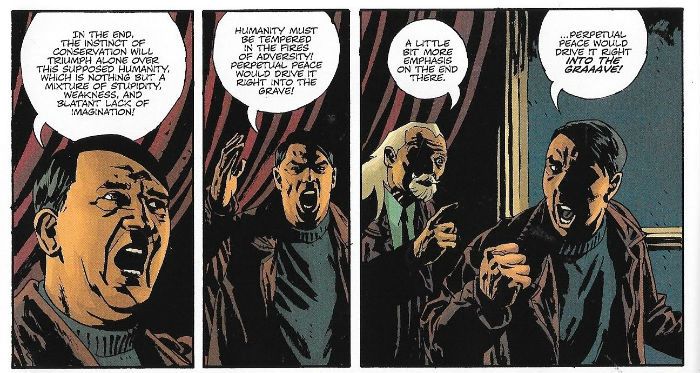 7 PSYCHOPATHS by Phillips, Vehlmann, Heching, Hubert & Peteri
7 PSYCHOPATHS by Phillips, Vehlmann, Heching, Hubert & Peteri
Of course this BOOM! Edition was aimed at an Engish or American audience so being healthily xenophobic we don’t care about Fabien Vehlmann with his, ugh, Frenchness, no matter how well he’s written this; no, we’re probably drawn to this because it was, uh, drawn by Sean Phillips. Mostly Sean Phillips spends his time making Ed Brubaker comics far more interesting than they have any right to be, so it’s nice to see him do something else. He does a pretty good job here; he’s Sean Phillips after all, so even on a bad day he’s still got some sweet chops. The panels are quite small, Euro-style, and he never gets a full splash, yank style, so he seizes by the scruff the few three quarter splashes he does get. Yeah, he has some fun with those showing the prophetic pantomime show going on in Starken's head. The stained glass Hitler warning us of the Cuban Missile Crisis was my favourite. Although the bit where they open the door to meet Hitler hits its hilarious mark spot on as well. Spoilt for choice, really. It’s a war book so by necessity it’s a reference heavy book and Sean Phillips does okay. I didn’t check any of it, but the German uniforms look like German uniforms and the Jerry tank is a Tiger instead of a Russki T-34, the British look British etc. The physical locations all look present and correct, largely because he seems to have drawn over photos so well they should be. There’s a bit too much “Sean’s Smile” going on (look at his work long enough and you soon recognise “Sean’s Smile”) and some problems getting the distinctive German helmet right, but all my carps are small carps. It’s Sean Phillips stretching himself so, you know, it’s solid with the odd burst of spectacular. On reflection I’m probably just being overly picky because he doesn’t find room for his signature “white shirts with creases”, which I enjoy seeing so much.
 7 PSYCHOPATHS by Phillips, Vehlmann, Heching, Hubert & Peteri
7 PSYCHOPATHS by Phillips, Vehlmann, Heching, Hubert & Peteri
7 Psychopaths is inventively written and nicely drawn stuff so I’m going to give it a GOOD!
OI! Where do you think you're swanning off to? No one said you could go. Sit back down. Right...Now look, it’s a sad reflection on the depths our collective psyche has plumbed that I feel the need to point out that in this series Hitler is the bad guy. Further, and it kind of pains me to have to spell this out, in real life Hitler was the bad guy. He was a “bad dude”, in the parlance of today’s POTUS. Previously that could go unspoken, but apparently some of you out there these days don’t really get the whole Nazi thing. Even I in my blithely middle-aged caveman no Facebook, no Twitter life picked up on the recent furore over whether it was right to punch Nazis. I really don’t know what’s so hard about that question. Was everyone just stuck for moral dilemmas that week? Had everyone forgotten their history? Have you all lost your furshluginner minds! The Nazis were a blight on humanity. They still are. They always will be. The evil is built in. Nazism is a giant filthy ideological cancer that will metastasize like mad given half a chance. So you don’t give it that chance. Oy! What’s hard about this, I ask you?!? Say you go to your doctor and he or she pulls a funny face and orders some X-rays, and later finds some shadows on your lungs, okay? He or she doesn’t go “Gee, we should maybe encourage that. Maybe you should take up smoking, eat a lot of burnt toast? Smoke more if you already smoke, get some Genetically modified food into your diet, put your head in the microwave if you can. Y’know, a lot of people talk cancer down, but, you know, maybe if we encourage it, give it chance to grow it’ll make you shit gold bars and bring a Heaven on earth.” No, he or she gets zapping that crap as fast as he or she can.
 7 PSYCHOPATHS by Phillips, Vehlmann, Heching, Hubert & Peteri
7 PSYCHOPATHS by Phillips, Vehlmann, Heching, Hubert & Peteri
Fucking Nazis. What’s up with you all out there? Try turning off MR fucking ROBOT and picking up a book. If you ever find yourself going, “Hmm. You know, maybe those Nazis have a point.” Something’s gone wrong in your head. There’s no “shades of grey” here. It is simply black and white. Or black with silver piping and a natty little skull to boot. Nazis! Their “philosophy” was/is childish horseshit. A load of half understood crap science and mindrot mythology, about being descended from a race of people who live in the earth’s core. That’s a 1970s Edgar Rice Burroughs movie starring Doug McClure and Caroline Munro not a workable philosophy! Some of those evil goofballs were actually, really, truly, looking for Biblical nonsense like The Ark of The Covenant and The Spear of Destiny. That was in the 1940s, Kirk Brandon didn’t even form Spear of Destiny until 1983! That’s how fucking smart Nazis are. But John, they are smart, they’ve read Nietzsche! Don’t give me that Nietzsche stuff, unlike most Nazis I’ve read Nietzsche, and as problematic as a big woolly humanist like me finds him, Nietzsche would have spat in their faces. Of course they’d have bested his more subtle ratiocinations by catching him in an alley and kicking him to death en masse, or maybe throwing a Molotov through his window while he slept, you know, in that brave way Nazis have. And they’re always the injured party! O! So badly done to! Nazis! Always the fucking underdogs, even when they’re shoving bayonets through barbed wire at your emaciated frame. It’s still your fault! Why are you making them do this! Can’t you see the tears in their eyes as they bundle you into that van with the hose leading from the exhaust into the air vent! You heartless untermensch! The poor wickle Nazi lambs.
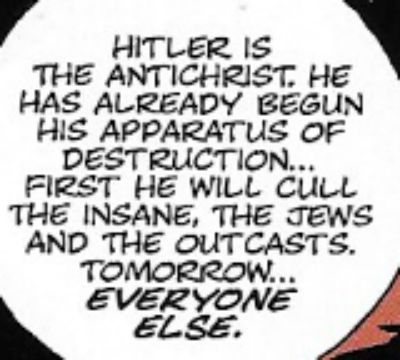 7 PSYCHOPATHS by Phillips, Vehlmann, Heching, Hubert & Peteri
7 PSYCHOPATHS by Phillips, Vehlmann, Heching, Hubert & Peteri
They have to do all this rank shit because, well, er, the Treaty of Versailles went too far. That’s it. That’s their rationale. Look, the Treaty of Versailles was in 1919 and had to do with Germany’s reparations for WW1. ♫♬♩ Let it go, let it go, let it gooooooooooooooo! ♫♬♩. I don’t know what earthly reason an American Nazi has to feel badly done to. Particularly as the average American Nazi would probably look at you gone out if you even mentioned the Treaty of Versailles. I imagine they aren’t too tight on the whole WW1 deal either. I guess it must just be terrible living in the richest country in the world. Is it that there’s too many black people? Too many Jews? Too Many Hispanics? Too many cooks? Have you seen how big America is! No, if there’s too many of anything there’s too many Nazis. If there’s one Nazi there’s too many Nazis. Even if (and it’s a pretty big if) American Nazis were still sore about the Treaty of Versailles, or whatever’s hurt their sensitive Nazi feelings in America (Black people being able to drink from water fountains? ALF getting cancelled?), what are they working towards? The most successful Nazi ever was Hitler and Hitler’s Germany ended up (and these are just the highlights you understand) shooting the mentally ill and shoving people in ovens. That wasn’t a mistake; things didn’t just get a little bit out of hand; that was the plan. That. Was. The. Plan. I don’t know, call me a snowflake, but that’s not an ideal outcome to my mind. But to Nazis it is. That’s what they are working towards. That’s still the plan. Building giant autobahns with concrete mixed with your ashes. Something to aim for there. Really worthwhile stuff. Making the world a better place, yeah? Seriously, Nazis have nothing to offer humanity. Sit round the negotiating table with a Nazi and you’ll soon find they have nothing to offer. It’s never long before they start on the old “ethnic cleansing” tip. Dead giveaway really, that. I find the whole “ethnic cleansing” thing a bit of a deal breaker, speaking personally. I’m just funny like that.
 7 PSYCHOPATHS by Phillips, Vehlmann, Heching, Hubert & Peteri
7 PSYCHOPATHS by Phillips, Vehlmann, Heching, Hubert & Peteri
Remember that bit in The Dead Zone where Johnny Smith asks Dr Sam Weizak if it would be right to go back in time and kill Hitler? He doesn’t ask if it is okay to go back and punch Hitler, does he? No, he cuts straight to the chase. And the Doc does too: “I'm a man of medicine. I'm expected to save lives and ease suffering. I love people. Therefore, I would have no choice but to kill the son of a bitch.” Christ, I got my moral instruction from Original Star Trek, 2000AD, a second hand illustrated Bible and my ol' Mum’s Stephen King novels, and even I know whether or not to punch a Nazi is the wrong question. The right question is why are there still Nazis? Sort yourselves out, you’re a disgrace. It’s 2017 not 1939; sort it.
 7 PSYCHOPATHS by Phillips, Vehlmann, Heching, Hubert & Peteri
7 PSYCHOPATHS by Phillips, Vehlmann, Heching, Hubert & Peteri
NEXT TIME: Maybe something else from that there Europe because whatever the original language they are all – COMICS!!!


